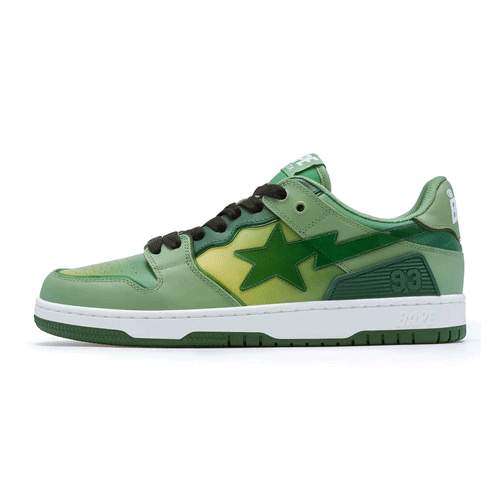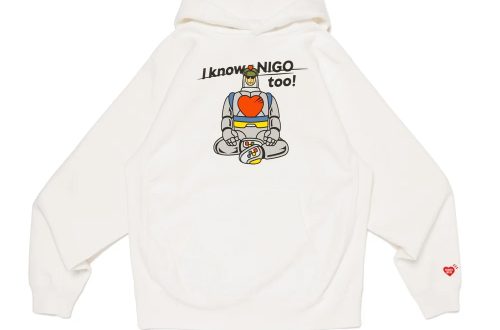The world of streetwear has no shortage of iconic sneakers, but few have stood the test of time quite like the Bapesta. Known for its bold design, unmistakable star logo, and deep roots in hip-hop and Japanese fashion, the Bapesta has carved out a legacy that spans decades. From its controversial beginnings to its current status as a collector’s item, this sneaker has remained a staple for those who live and breathe fashion, music, and youth culture.
The Origins of Bapesta: A Bold Vision by A Bathing Ape
Bapesta was first introduced by A Bathing Ape (BAPE) in the early 2000s. Founded by Japanese designer Nigo in 1993, BAPE quickly became a dominant force in Japanese street fashion. While the brand initially gained traction in Harajuku, it wasn’t long before it caught the attention of celebrities and trendsetters worldwide.
When BAPE launched the Bapesta, sneaker enthusiasts immediately noticed its striking resemblance to the Nike Air Force 1. With a similar silhouette and midsole, the Bapesta turned heads—but it wasn’t just a copy. It was a reinterpretation, infused with Japanese street style and a unique flair that made it unmistakably BAPE.
Design Language: Recognizable and Unapologetic
What makes the Bapesta so instantly recognizable is its design. The shoe features a bold shooting star logo—a signature element that replaced Nike’s Swoosh. The upper typically comes in high-gloss patent leather, often in flashy, mismatched colors or camo prints, a BAPE hallmark.
The sneaker’s design choices were not made for subtlety. Instead, the Bapesta embraced a loud, in-your-face aesthetic that aligned perfectly with the streetwear culture emerging in the early 2000s. As sneakers became a status symbol, the Bapesta stood out as a piece that was as much about identity and attitude as it was about fashion.
Cultural Impact: Bapesta and the Hip-Hop Connection
One of the major factors behind Bapesta’s global success was its deep connection to the hip-hop community. During the 2000s, artists like Pharrell Williams, Kanye West, and Lil Wayne were frequently seen wearing Bapestas, cementing the sneaker’s place in pop culture.
Pharrell, in particular, played a crucial role. As a style icon and a frequent collaborator with Nigo, his endorsement of BAPE helped propel the brand into the American mainstream. The two would later co-found Billionaire Boys Club, a brand that further blurred the lines between hip-hop and high fashion.
This celebrity association wasn’t a marketing ploy—it was organic. BAPE and Bapesta became a symbol of creative individuality. Wearing a pair was not just about fashion; it was about being part of a movement that celebrated uniqueness and self-expression.
Collaborations That Changed the Game
Over the years, BAPE has mastered the art of the collaboration, and the Bapesta has served as a canvas for some of the most memorable sneaker releases in streetwear history.
From working with Marvel Comics, DC, and Hello Kitty, to teaming up with iconic artists like Kaws, the Bapesta has taken on countless forms. These collaborations have not only increased the sneaker’s desirability but have also turned many releases into limited-edition grails.
Each collaboration brought a new twist to the silhouette while maintaining its core identity. Whether it’s a camouflage print, reflective detailing, or custom character art, Bapesta drops are consistently inventive and exciting for collectors.
Bapesta Today: Resurgence and Reinvention
Though BAPE saw a quieter period during the mid-2010s, the Bapesta has experienced a strong resurgence in recent years. The return of Y2K fashion, the rise of sneaker culture globally, and the demand for retro styles have all contributed to the Bapesta’s renewed popularity.
New colorways, refined materials, and modern reinterpretations have made recent Bapesta models feel both nostalgic and fresh. The brand has leaned into the sneaker’s heritage while embracing the current landscape, where Gen Z and Millennials alike value authenticity and legacy in fashion.
BAPE also continues to expand its global presence, with flagship stores and brand activations in cities like New York, Los Angeles, and London, making the Bapesta more accessible to fans around the world.
What Makes Bapesta Unique in the Sneaker World
Unlike most sneakers, the Bapesta doesn’t follow seasonal trends. Its design has remained largely consistent for more than two decades—a testament to its strong identity. That consistency has also helped build a dedicated fan base, many of whom view the shoe as a timeless classic.
Another standout element is the brand’s attention to detail and craftsmanship. Even with its flashy design, the Bapesta reflects Japanese fashion’s meticulous standards. From the stitching to the choice of materials, each pair represents a fusion of bold style and premium quality.
Why Bapesta Matters in Streetwear History
To understand the significance of Bapesta, you have to look at more than just the sneaker itself. It represents a moment in fashion history—a time when streetwear started breaking into the mainstream, when hip-hop became a fashion driver, and when Japanese design began influencing global culture.
Bapesta played a key role in breaking down the wall between luxury and streetwear, paving the way for today’s collaborations between high fashion houses and sneaker brands. In many ways, it was ahead of its time, challenging norms and creating its own lane.
How to Style the Bapesta: Loud Yet Versatile
Styling the Bapesta can be a fun challenge. Given its bold look, it’s often the centerpiece of an outfit. Pair it with slim jeans, cargo pants, or oversized shorts, and don’t be afraid to experiment with colors and prints. Streetwear staples like graphic tees, hoodies, and bomber jackets work exceptionally well with the shoe.
For a cleaner aesthetic, opt for monochrome colorways or limited-edition collaborations that use more subtle tones. But if you’re feeling adventurous, go all-in with camo prints or vibrant patent finishes. Bapesta isn’t for minimalists—it’s for those who want to make a statement.
Where the Bapesta Fits in the Sneaker Hierarchy
In today’s sneaker landscape, filled with hype drops and constant releases, the Bapesta remains a cult classic. While it may not always dominate headlines like new Jordans or Yeezys, its cultural weight is undeniable.
Collectors respect its legacy. Fashion lovers admire its design. And casual wearers are drawn to its uniqueness. It occupies a niche space where nostalgia, fashion, and counterculture meet—a space very few sneakers can claim.
Conclusion: Bapesta’s Legacy Is Just Getting Started
From Tokyo’s backstreets to global fashion runways, the Bapesta has cemented its place as one of the most important sneakers in streetwear history. It’s bold, unapologetic, and endlessly influential. Whether you’re a longtime fan or new to the scene, the Bapesta offers more than just style—it offers a piece of cultural history.
As fashion continues to evolve, the Bapesta remains a symbol of rebellion, innovation, and identity. In a world that often follows trends, this sneaker dares to stand apart. And that’s what makes it truly timeless.




